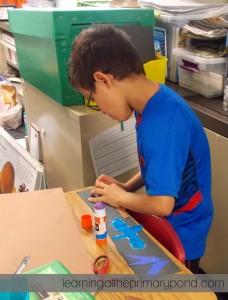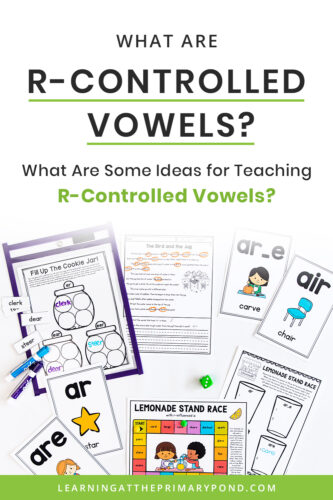Have you ever avoided letting your students play a game in class because of the risk it might not go as planned? In my first couple of years of teaching, sometimes I had these worries about using games:
- “Will the students actually be learning if they’re playing games?”
- “Will they get too frustrated or excited when playing games?”
- “If it’s a partner game, will they finish the game quickly and then just talk?”
- “How do I organize the games and manage all of the pieces?”
All of these are totally reasonable questions, but if you think about procedures and routines ahead of time, many of the issues won’t be problems at all!
In this post, I’ll explain why you should let your students play games and tell you about some of my favorite literacy games for Kindergarten, first grade, and second grade students. By the way, all of the games you’ll see and hear about in this post come from my completely FREE No-Prep Phonics Games resource. Click here for access to that!
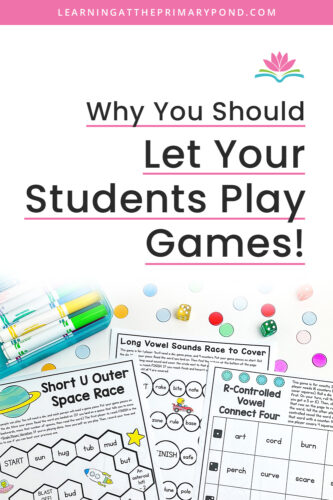
What Are Some Benefits of Literacy Games?
- Games can increase overall student engagement. Sometimes, during whole group instruction, they can easily zone in and out. But literacy games combined with a competitive spin on something can help keep students engaged!
- Literacy games with partners provide an opportunity for peer teaching and community building. I’m always amazed at how students can explain things to one another in a student-friendly way. Having a student explain something to a struggling student strengthens both partners’ knowledge of the topic. These positive interactions in the classroom between students can also transfer to other parts of the day, which helps build classroom community and positive social relationships. (If you want to read more about why partner work is important, check out this blog: Why Is Partner Work Important? How Do You Set It Up Successfully?)
- Games provide an opportunity for differentiated independent practice. A lot of instruction is done in a whole group setting (which makes sense, at times, for time efficiency and practicality!) But this doesn’t always allow for tons of differentiation. Games can be a great way to have students practice specific skills they need support with. Different pairs of students play different games, depending upon what they need to practice.
- Games can provide time to review literacy skills. It can be difficult to find time for review on top of all the new skills you’re teaching. Having students play games to review past skills will help concepts better “stick” as the year progresses.
What Are Some Examples of Games?
Every one of the games I’m going to go through are from my FREE No-Prep Phonics Games. The purpose of these hands-on activities is to reinforce your phonics and reading instruction through interactive practice. All of the games include easy-to-follow directions and require minimal materials. Both solo and multi-player games are included, and the games require zero cutting or other preparation!
Beginning Sounds Race to Cover
To play this game, students need a die, a game piece, and 6 cubes/counters. First, place the counter on “Start.” Roll the die, and move the counter that many spots. The student would look at the picture he/she landed on and say the word. Then, they look at the letters at the bottom of the page. If the beginning sound of the picture matches one of the letters, cover it. Keep rolling, reading, and covering! See if all six pictures can be covered before reaching “Finish.” If “Finish” is reached before all six pictures are covered, uncover all the pictures and start again.
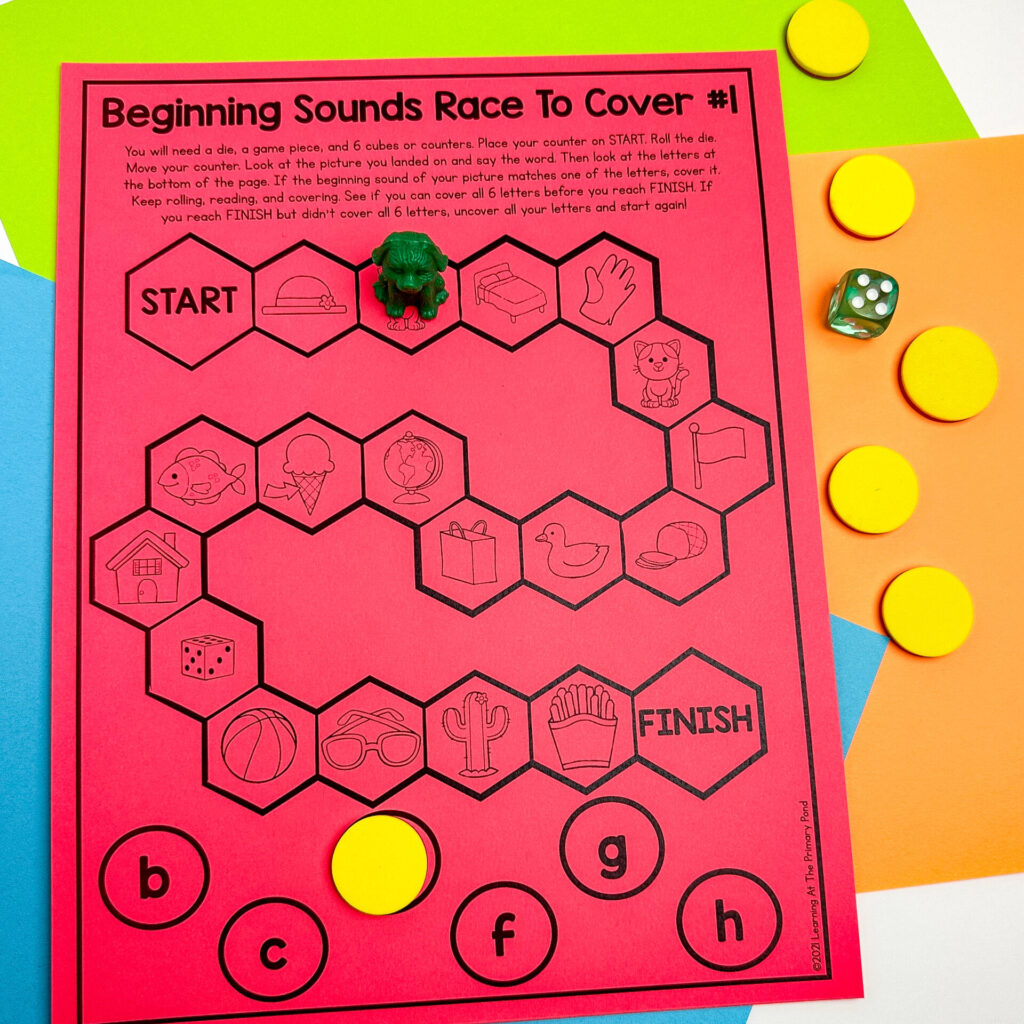
“CH” Words Slide and Climb Game
This game can be used with 2-3 players! They’ll need a die and each player will need a game piece. One student will begin by rolling the die and moving their game piece. They’ll read the word, and the other players can check if it’s correct. If students land on a ladder, they get to move up it after reading the word. If they land on a slide, they slide down it! The first player to reach the star wins.
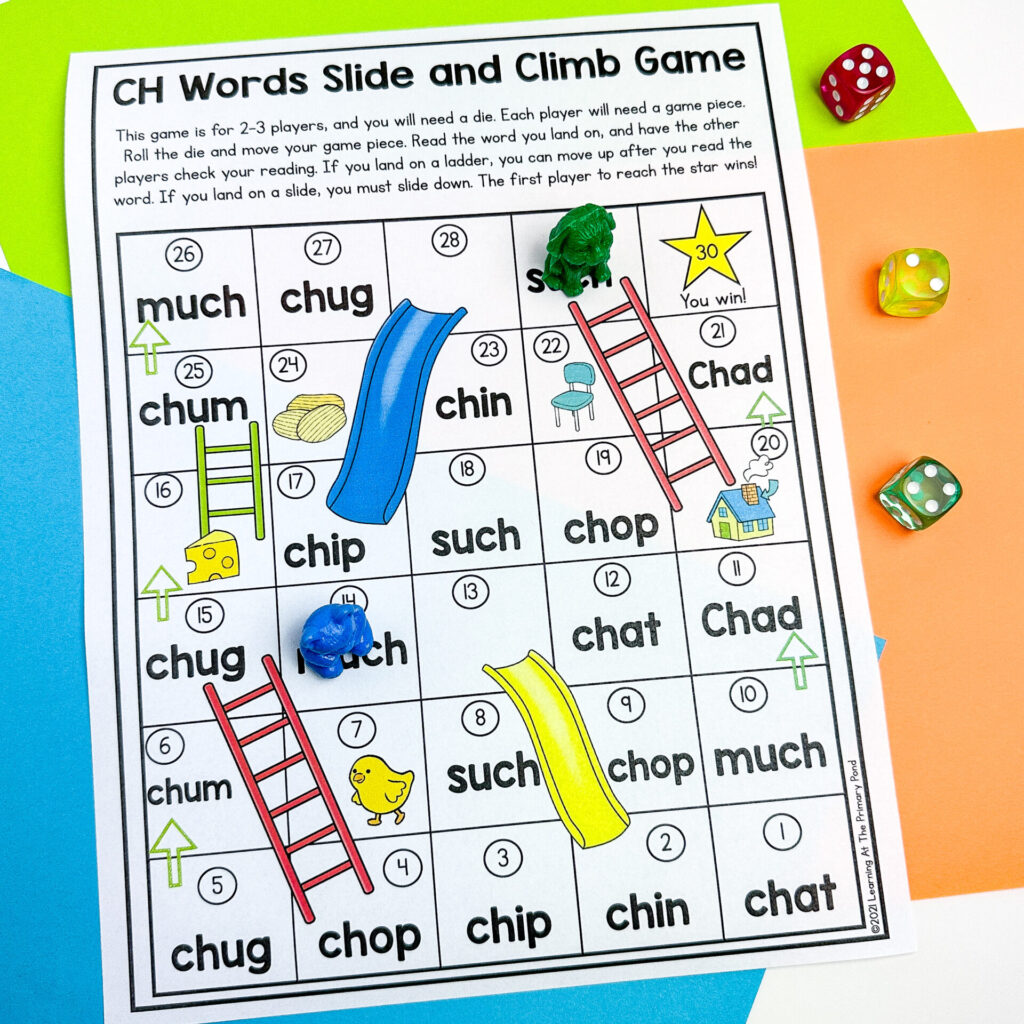
R-Controlled Vowel Connect Four
This game is for 2 players, and each player will need 16 counters. The first person will roll the die and choose a word from that row on the page to read. (If they roll a 5 or 6, roll again!) Once the word is read, the player tells the other player what r-controlled vowel the word contains (i.e. “ur” for the word “curve”), and then they cover the word with a counter. Play continues until one player covers 4 squares in a row.
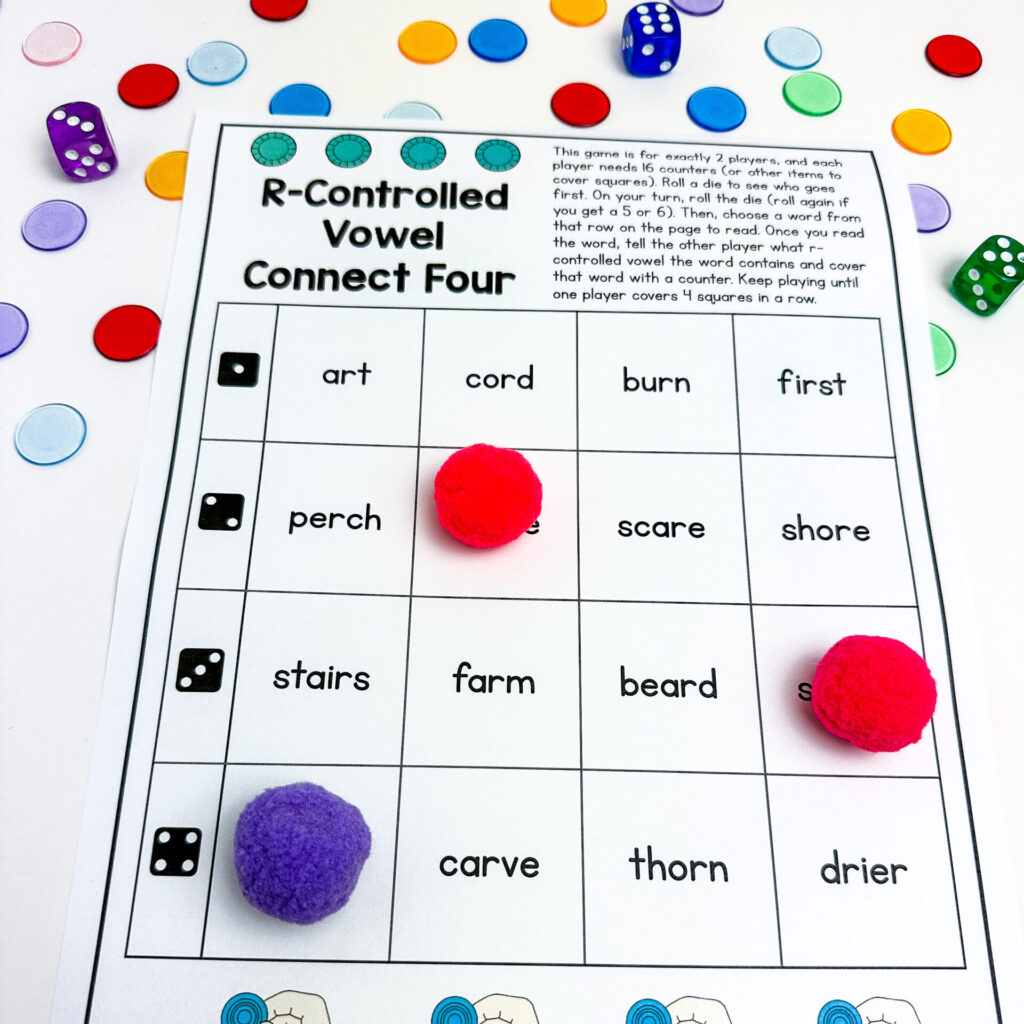
Fishing for “AW” and “AU” Words
This game is meant for 1-3 players. They’ll need a die, a game piece, the recording sheet, and a pencil. Roll the die and move the game piece. Read the word and then decide which diphthong pattern the word includes (“aw” or “au.”) Then, write the word in the correct place on the recording sheet. Keep going until all the players reach “Finish,” and then count the words to see which pattern is the winner!
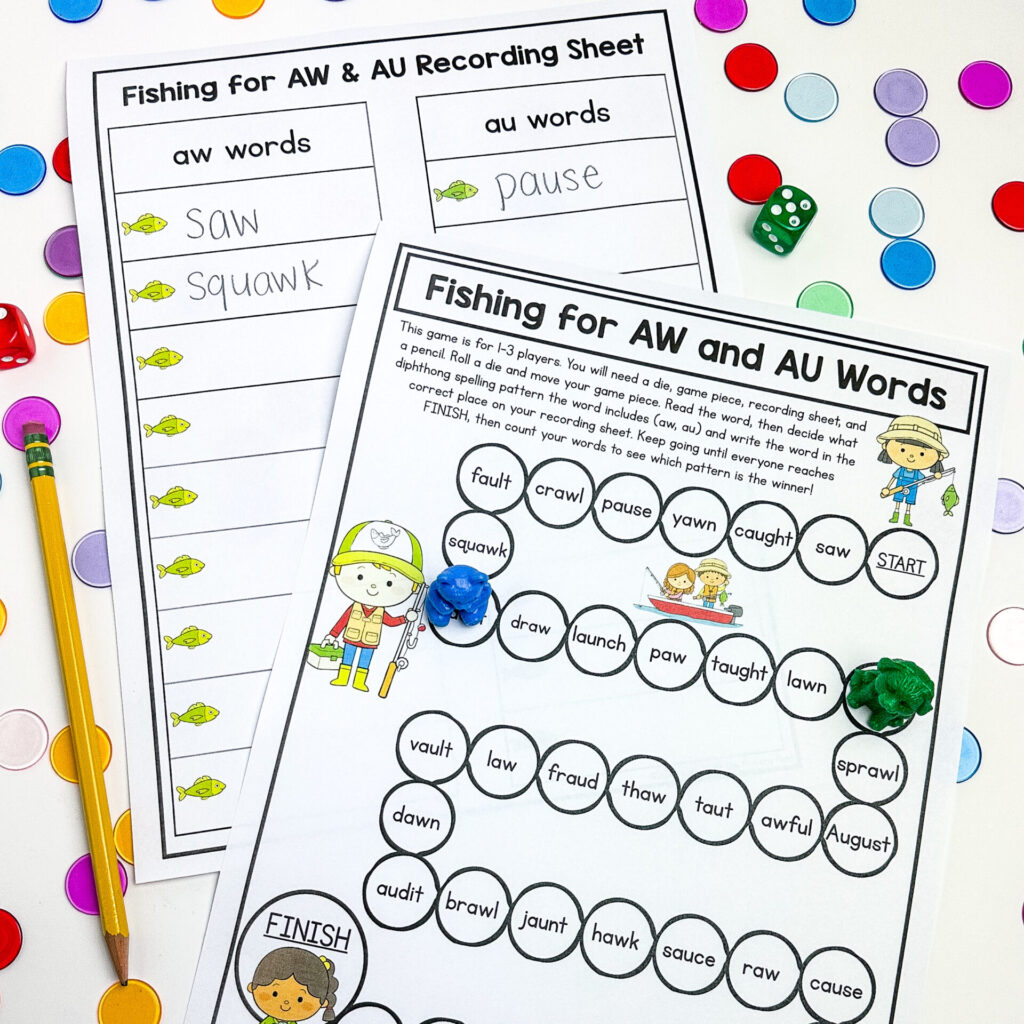
Conclusion
I hope this blog inspired you to use more games in your classroom! Before students play the games, you may want to consider the following:
- Model the game for them beforehand, with explicit directions. You will also want to be clear about what to do when the game is finished (i.e. clean it up, and choose another game).
- Be intentional about partners – sometimes it’s beneficial to have mixed levels working together, other times similar levels.
- Have the materials organized in a small bin so that students can easily get the game out, and then easily clean it up!
- Choose games that are no or low-prep so that you aren’t spending too much time having to prepare it for students.
- Make sure the game matches the skill set of the students so that it’s not too difficult/too easy.
With anything, it’s always important to explain the rules and procedures ahead of time for students, modeling when necessary, so that they can be successful. Remember that all of these No-Prep Phonics Games seen in the post can be yours completely FREE by clicking here.
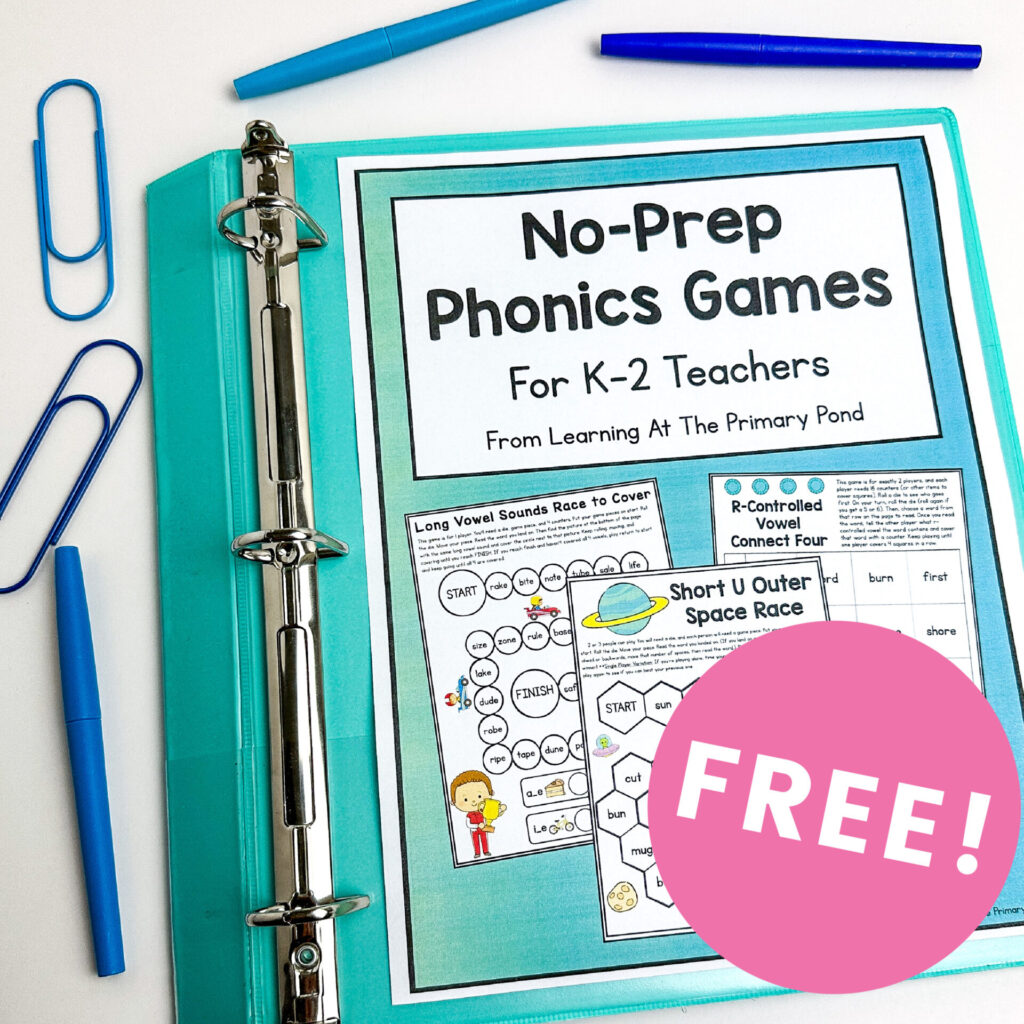
Happy teaching!





